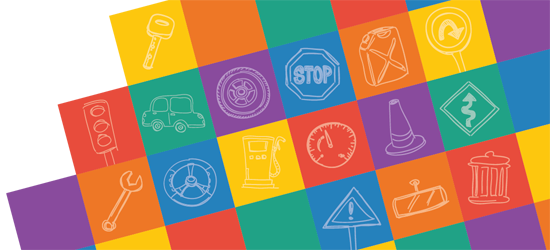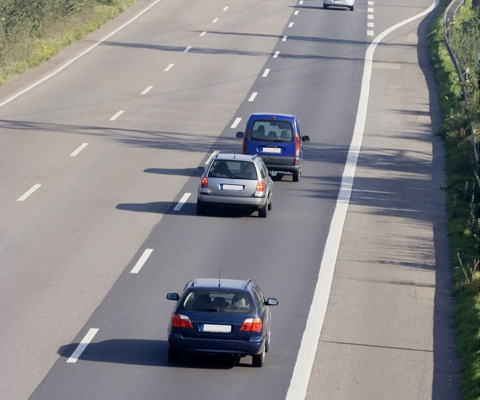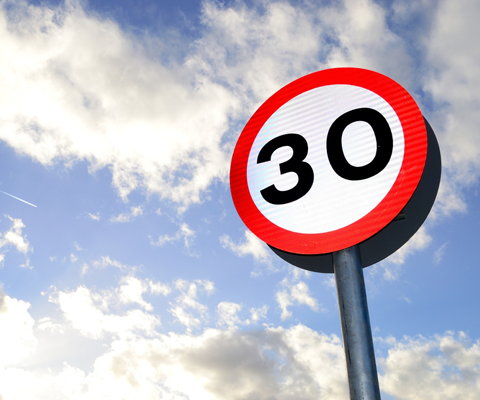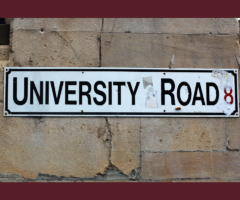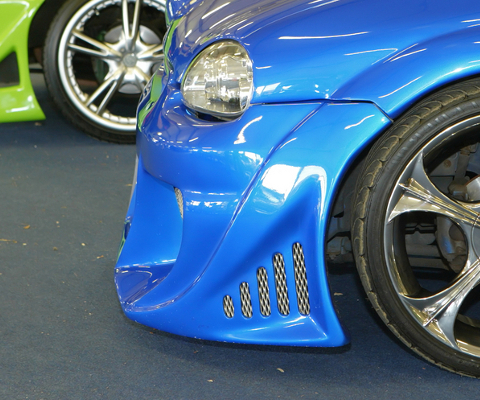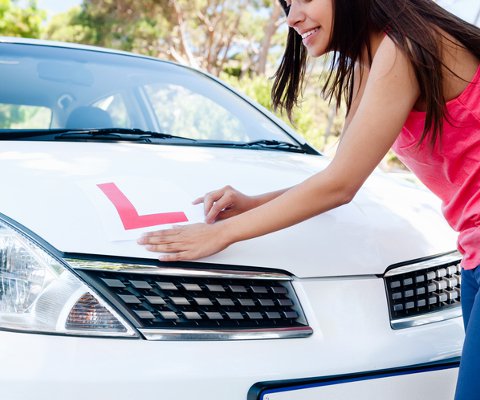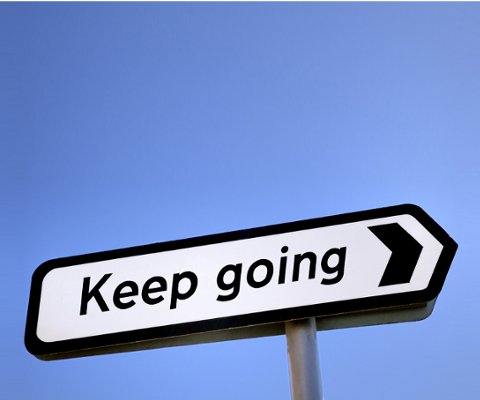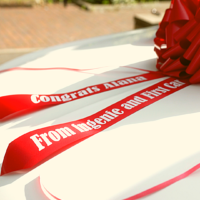
How to bay park
The way you learn the bay park with your driving instructor will help you soooo much after the test. The last spot right in front of Tesco AND no flattened bollards. Win.
The bay park is one of the 3 manoeuvres you’ll need to learn for your driving test. The bay park in your test is a reverse parking manoeuvre but that could mean driving in and reversing out OR reversing in and driving out. And you don't get to pick which!
There are several ways to do the bay parking manoeuvre but they all rely on these key skills:
- Accuracy: make sure you position the car within the bay lines
- Control: keep the car very slow using clutch control, braking smoothly
- Observation: ramp up the observation in the right areas
The reverse-in bay park process
We'll split this into 3 chunks (Preparation - Observation - Manoeuvre) but make sure you're doing your observation at the same time as all the other steps.
Preparation
1. Position the car with plenty of room between you and the bays you are reversing into - about a car’s width if possible. This makes the manoeuvre easier as it gives you a wider turning circle.
2. Count 3 lines back from the bay you’re aiming for and reverse to where that line is half-way through the front passenger door - like it’s a spear through your side.
3. When you’re happy with your position, gently brake to a stop and apply the handbrake. Make sure you’re in reverse gear, then get yourself ready to move: find a good clutch position for control as you'll be needing to move veerrrrryyy slowwwwlyyyy.
Observation
Before moving: check your left blind spot, left mirror, ahead, main mirror, right mirror, right blind spot. Wait to let anyone you see pass safely.
To reverse: fix your gaze on your rear window, checking your left side mirror now and then to see the line of the bay appear.
Any time you slow or stop: check all around again for vehicles, pedestrians, and cyclists. If anyone approaches, stop and let them pass. If they stop for you, carry on with the manoeuvre. You’ll only cause more of an obstruction if you dither.
Manoeuvre
1. Start reversing and almost immediately turn the wheel fully to the left. The front of your car will swing out to the right so be aware of hazards.
Look in your left mirror to pick up the nearest line of the bay you want. As your car starts to move round into the bay, the right mirror will pick up the other line on the driver side.
Keep looking around, especially over your left shoulder. Avoid using the exterior mirrors apart from a quick glance to ensure you're between the lines. Make slight adjustments if necessary.
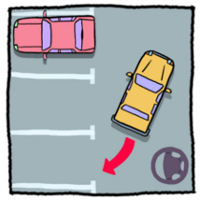
2. If you find that you're too close to the nearer bay line, steer half a turn to the right.
This will widen the turning circle, positioning the car closer to the other line so you're more centred.
Remember: the slower you do this manoeuvre, the easier it is and the more time you have for observation.
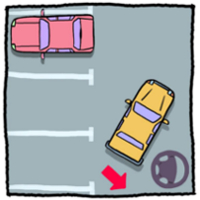
3. As you're entering the bay, make sure you have a foot to spare either side of you by glancing at both wing mirrors.
Adjust by steering very slightly left or right as needed.
It's fine to pull forward at this point if you want to, so you can reverse straight back into the bay.
Just remember your observation before you move forward or it could have all been for nothing.
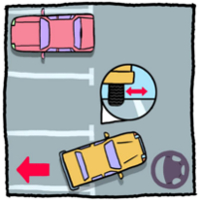
4. Don’t reverse back too far and take your time pulling forwards/back slightly to straighten up.
It doesn't have to be beautiful but you can get a minor if you're very skewiff.
When you've finished straightening and you're 100% happy with your position in the bay, apply the handbrake and select neutral.
Phew!
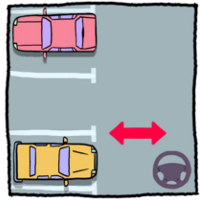
The forward bay park process
The DVSA have very helpfully made a video on how to do this manoeuvre - to driving test standard.
Manoeuvre
1. Make sure you give yourself as much space as possible. If you're turning into a bay on the right, move as far left as you can. If you're turning into a bay on the left, move as far right providing it is safe to do so.
You need to make sure you avoid driving over parking bays or getting too close to other cars. Do your mirror, signal, manoeuvre checks to make sure it's safe before turning into the bay.
As you enter the bay, straighten up your steering and stop the car at the end of the bay kerb or line.
Go into neutral and put your handbrake on.
2. Before you start reversing, do your all-round checks to make sure it's clear. Select the reverse gear and release the handbrake. As you start reversing you should be looking over your left shoulder in the direction of travel and be moving at crawling speed so you can stop the car if another car approaches.
Remember: some car parks have a one-way system with arrows on the ground to show the flow of traffic. Make sure you reverse in the direction of the flow of traffic.
You should be continuously looking around during this manoeuvre as situations can change quickly. As you start to turn, the front of your car will swing out so you need to make sure you're keeping an eye on both the road you're reversing into AND the front of the car to check you're clear of hitting anything alongside or behind you.
3. Keep reversing on full steering lock until you have enough space to drive off. Stop the car, select first gear, check your blind spots again and away you go, being mindful of any pedestrians or other drivers reversing.
Bay parking in your driving test
You might be asked to do this manoeuver at the beginning or at the end of the test. If it’s right at the beginning, don’t forget the moving off procedure as you first come out of the bay you’re parked in.
You’ll be a bit OMG at being asked to do the manoeuvre right away so repeat your mantra from the beginning: OB-SER-VATION, OB-SER-VATION.
Which manoeuvre you're asked to do will depend where you do it. You'll either be asked to do this in the driving test centre or a car park along your test route that's not too busy. The examiner will direct you but you can choose which bay you want to reverse into/out of. There's also no requirement to park between cars, unless there is no other choice.
Don't stress too much about the final position of the car once you're in the bay, but try and make sure you're as straight as possible. As long as you're not outside the bay and the car could be reasonably left in that position without causing problems for others, you'll be fine.
If all fails and the manoeuver goes wrong, there’s no harm in asking the examiner if you can try again. Time permitting, there’s a good chance they’ll let you. And if you get it right the second time, you may still pass the bay park.

